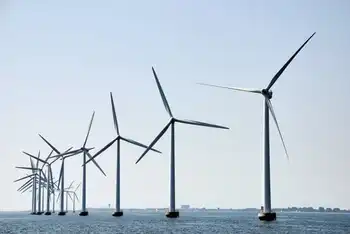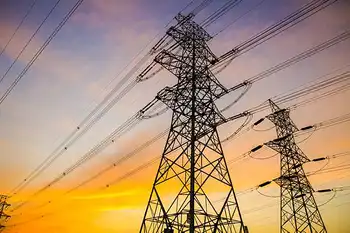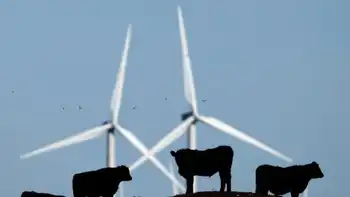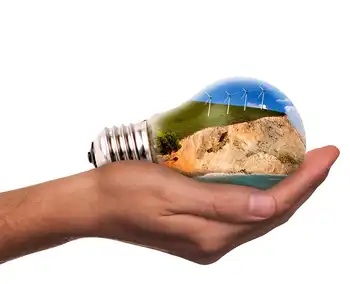Looking for ways to save as power costs climb
HARRIMAN, TENNESSEE - When David Bolt arises before his family and the sun, he wends through darkened rooms, LED flashlight in hand, to avoid turning on the lights.
It's one of numerous practices the Harriman resident and entrepreneur has adopted to save energy.
Through a combination of energy-saving and energy-generation technologies, Bolt transformed the family's 1970s rancher on the shores of Watts Bar Lake into a net-zero energy-producing home. That means that over the course of a year, the amount of electricity the home produces equals the amount of energy it consumes.
The home features solar panels and a solar water heater. Bolt has developed and installed an advanced ventilation system that, with proper sealing of his attic, allowed the family to reserve air conditioning for the five or six hottest and stickiest days this summer. A wood stove provides heat in the winter. Energy-efficient appliances and habits - such as hanging clothes out to air-dry, storing hot coffee in a thermos and carrying around an LED flashlight on dark mornings - do the rest.
With wholesale electricity rates on the rise in recent months and set to jump a whopping 20 percent in one week heading into the winter heating season, Bolt's super-saver home is looking a little less, well, eccentric.
In fact, Bolt is parlaying the lessons learned on his house into a business. Sustainable Future designs and sells photovoltaic (solar panel) and solar hot water heat systems, offers instruments for advanced electricity metering, and other services to help its mostly residential client base make homes more energy efficient. He launched the business three years ago and didn't hire his first employee until last year. Now the company has seven employees.
"In 2005 people didn't know what the hell I was doing. It was hard to find a general contractor," he said. Since then, Bolt has received his own general contractor license - and, of late, business is booming.
"Builders are coming to me, wanting to know what they can do," he said.
Thirty years ago, as electricity rates soared during the nation's last energy crisis, energy efficiency was all the rage. And TVA took the lead in providing homeowners with incentives and financing to retrofit their homes with insulation, double-paned thermal windows and energy-efficient appliances.
"TVA had one of the best efficiency programs in the country for 10 years," said Alex Tapia, program manager for the Southeast Energy Efficiency Alliance, a nonprofit subsidiary of a national energy efficiency group, the Alliance to Save Energy.
Between 1978 and 1988, the agency sent out 300 energy assessors to 1 million homes in Tennessee, Tapia said. As a result, 600,000 homes underwent energy-efficient retrofits, saving 1,200 megawatts of power.
"It worked so well it put itself out of a job," he said.
By the mid-1980s, TVA had extra power capacity, and "us and most of the utility industry across the nation became focused on getting people to buy more power," said Joe Hoagland, vice president for energy efficiency and demand response at TVA.
Today, Tennessee ranks second in the nation in energy usage, according to Tapia.
But with demand growth in recent years and, in particular, this year's steep prices for coal and natural gas, TVA is dusting off its old energy-efficiency programs - and coming up with new ones - to address the problem, focusing on shaving the load during times of peak demand.
"We're still working on the details of exactly (what those programs) will look like," Hoagland said. "With the banking situation right now, banks are a bit concerned about loaning people money," complicating efforts to offer low-interest loans for energy-efficiency improvements.
Hoagland said TVA is working with its distributor customers on concepts for programs to be rolled out, hopefully, by the first of next year.
TVA also is sponsoring research on four homes being built by Oak Ridge National Laboratory and Schaad Cos. that will demonstrate new energy-efficiency technologies. The homes are being built in Oak Ridge.
Within the next couple of years, TVA plans to roll out a new rate structure that ties prices consumers pay for electricity to the time they use it. For instance, in the hot summer months, washing your clothes at night would cost less than during the heat of day.
The state also is working to develop an energy plan to make energy efficiency and other energy-related measures a priority in the state. But Tapia said an unusual regulatory climate has made such measures difficult in the past.
"Tennessee is unlike any other place in the country, especially with electricity," Tapia said. Because it's a "home rule" state, building codes are set and enforced at a local level. And TVA's federal status gives the agency "jurisdiction over things the state can't tell them to do.
"I wouldn't say that it's necessarily anybody's fault," he said. "It's just that there's so many cooks in the kitchen, there's no chef."
Still, he said, Tennessee can set a statewide energy code and assist local jurisdictions with training and hiring new codes-enforcement officers. The state also could help homeowners get home-energy ratings. And, he said, the state can make its own operations more energy-efficient as well - "the biggest energy user in the state is the state."
So, will energy efficiency stick this time around?
Even if prices do come back down, pending national efforts to cut back carbon emissions mean increased cost for power providers, particularly those like TVA that depend largely on coal for generation, Tapia said.
All but inevitable are a carbon cap and trade system that allows exchange of carbon emission credits, meaning "the price of carbon will be a factor in future rates," he said. And while power companies are pursuing non-carbon-emitting sources of power such as renewables like solar or wind and nuclear energy, "efficiency is the cleanest, cheapest, largest source of new energy in this country," Tapia said.
David Bolt's house offers a glimpse of this energy-efficient future.
Bolt's dream for an energy-efficient home that would serve as a training ground for his green business was spawned after the 2003 sale of MarketLinx. That company, which Bolt helped found in 1996, created an Internet-based multiple listing service for a large real-estate board.
"I was very interested in the environment and sustainability," Bolt said.
After buying the lakeside rancher, he set a $100,000 budget to transform the structure into a net-zero energy home. One-third of the money went for solar photovoltaics and solar hot water, one-third for energy-related changes such as the metal roof and new appliances, and one-third for more general renovations, including a new master bath, hardwood and tile to replace old carpet, and removal of a retaining wall.
During a tour of the house, Bolt ticked off the improvements, which are ongoing and include:
• Removal of all fiber insulation from the attic as preparation for foam insulation and addition of a lauan layer that creates an air gap from the soffit of the attic to its ridge. Even without the foam, which is scheduled for installation soon and will effectively make the attic part of the home's conditioned space, the attic's temperature is never more than 10 degrees above the outside temperature. A typical attic can get up to 140-150 degrees on a 90-degree summer day.
• Installation of a whole-house fan, which circulates hot air out of the attic.
• Replacement of an old 4-ton heat pump with a 2-ton SEER unit that's twice as efficient. The Bolts actually use very little air conditioning; when they do, it's primarily for humidity control.
• Caulking and foaming air leaks in the home, thereby reducing air infiltration by 26 percent and making it easier to keep the space an even temperature.
• Installation of a series of photovoltaic panels on the roof that produce, on average, 10 kilowatt hours of electricity per day, Bolt's target for electricity consumption. The average home uses 30-40 kilowatt hours of electricity per day.
• Installation of a 120-gallon solar hot water heater.
While some of these upgrades may sound daunting - and expensive - to the average homeowner, Bolt said he's been able to shed much of his electric load through simple measures.
Each night, he switches off lights and power strips connected to televisions, computers and other electronics that can sap power, even when turned off - what's known as phantom load.
By plugging up meters to specific devices and appliances throughout his home, Bolt has been able to pinpoint which are costing him the most electricity. For example, he discovered an existing refrigerator in the house required 131 kilowatt hours of power per month. A $500 replacement from Sears requires only 30 kilowatt hours monthly.
Other energy savings required only a simple change in routine. After the Bolts brew their morning coffee, they transfer it to a thermos and switch off the pot, cutting their energy use in half.
"Any motivated customer should be able to do a 10 percent reduction (in power usage) without much work," he said.
And simple modifications such as ventilating the attic and sealing ducts can yield up to a 30 percent reduction in power requirements, he said.
At the conclusion of his tour, Bolt disappeared into a storage building and returned with a 5-gallon bucket containing 28 pounds of coal - enough to produce 10 kilowatt hours of electricity.
It's his little bit, Bolt said, and every little bit helps.
Related News

Net-zero roadmap can cut electricity costs by a third in Germany - Wartsila
BERLIN - Germany can achieve significant reductions in emissions and the cost of electricity by phasing out coal in 2030 but must have a clear plan to ramp up renewables and pivot to sustainable fuels in order to achieve net-zero, according to a new whitepaper from Wartsila.
The modelling, published in Wärtsilä new white paper ‘Achieving net-zero power system in Germany by 2040’, compares the current plan to phase out coal by 2030 and gas by 2045 with an accelerated plan, where gas is phased out by 2040. By accelerating the path to net-zero, Germany can unlock a 34% reduction in…




